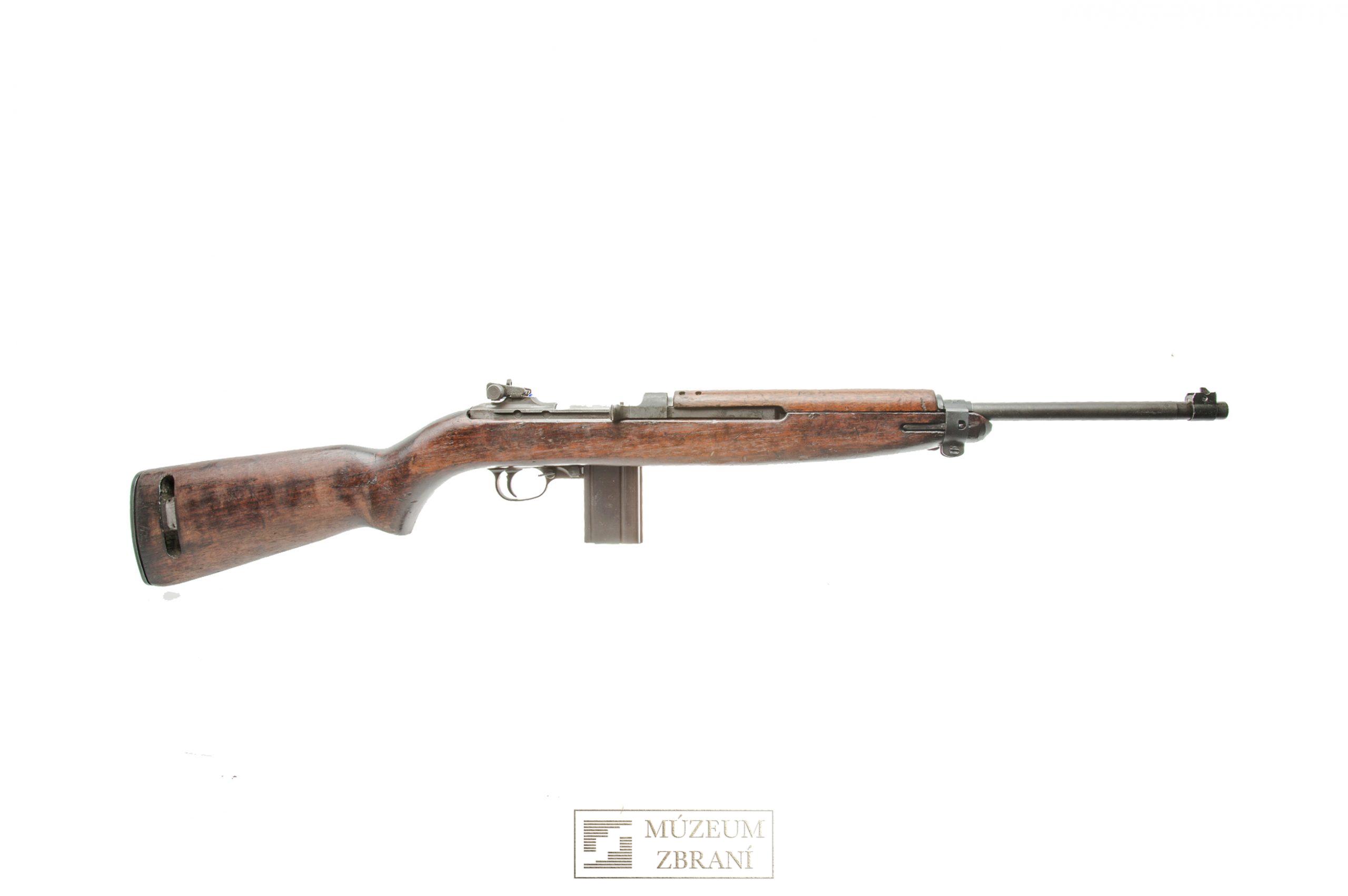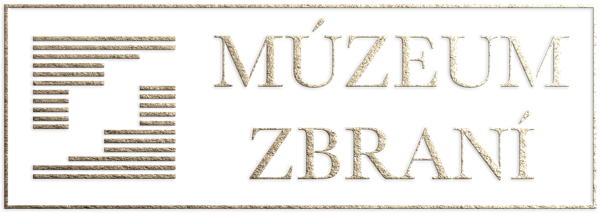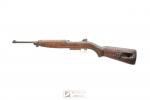M1 Carbine
| Weapon name | M1 .30 Carbine |
| Weapon type | Automatic rifle, M2 full automatic |
| Place of origin | USA  |
| Constructor | David M. Williams (Humeston, Roemer, Pugsley) |
| Designed in | 8/1942-8/1945 U.S.Military, 1945 – |
| Manufacturer | Winchester, Inland, Underwood, Rock Ola, IBM, Saginaw, Irwin Penderson, Quality Hardware, Standard, NPM. |
| Weapon variants | M1A1, M1A2, M1A3 ,M2, M2A1, M2A2, M3 |
| No. of units made | 6,3 mil. pcs 1942-1945 + post-war production |
Technical parameters
| Weight | 2,37 kg empty |
| Length | 90,37 cm |
| Barrel length | 45,72 cm |
| Type of cartridge | .30 carbine /7,62 x 33 mm/ |
| Calibre | .30 carbine |
| Muzzle velocity | 607m/s |
| Magazine | 5, 10, 15, 20 – round clip magazine, full automatic M2 – 30 – round clip magazine |
Weapon description
M1 Carbine, manufactured by Underwood Elliot Fisher Company, Hartford, calibre .30 Carbine, produced between 11/1943-4/1944 / according to the marking on the barrel 3/44 / in a series of 560,000 pieces, supplying the gun with 5, 10, 15, 20 round magazines (fully-automatic model M2 also with a 30-round magazine).
The rifle is marked on the back of the frame under the sight with serial number and the manufacturer name UNDERWOOD. On the front of the frame near the trigger pull is stamped the type designation in two lines U.S. CARBINE, CAL. 30 M1. Below the marking on the left side is the BNP mark with a crown and a stylized eagle with the letter N (described below). The eagle with the letter N is also found on the upper side of the breech.
The barrel of the gun is marked again with the manufacturer’s name UNDERWOOD with the month and year of manufacture 3 – 44 behind the front sight. Below this marking there is a stamped factory release mark in the form of an artillery ball with a flame (so called flaming bomb) and about halfway down the barrel there is a large letter P indicating the barrel test mark (Proof). On the lower side of the barrel, in order, is the British smokeless powder barrel test mark, the BNP (Birmingham Nitro Proof) mark with a crown representing the Birmingham proofing facility. This is followed in two lines by the .30 M1 calibre marking and the numeral 1.25″, which indicates the length of the cartridge case in inches (an old unit of measure, also inch, i.e., 1inch – 1inch – 2.3 to 3 cm) and below that 12 TONS PER □ which indicates the pressure in tonnes. At the end are the letters EB with the numeral 2 in a circle marking the year code E, B marks the Birmingham proofing facility and the numeral 2 the inspector’s personal mark. The barrel also bears the German verification marks, an eagle with the letter N indicating a smokeless powder barrel test, and the Munich proofing facility emblem with the numeral 680 marking the test year June 1980.
On the right side of the weapon the magazine catch button is also marked with the letter M (Modified), indicating the change of production of this part in later versions, and above it the letters AD – the code mark of the subcontractor. The sliding sight is marked I.R.C.O. on the right side, which is the manufacturer code mark, and below that is the replacement part number 7160060 (replacement part).
On the left side on the sheet metal handguard sleeve is marked J.M.O., which is apparently the code mark of one of the 1600 subcontractors for this weapon.
The weapon comes with a 5 shot wood-bottomed magazine, blackened with blue shine. Two spare 15-round magazines in cloth case still wrapped in greaseproof paper marked MN – manufacturer National Postal.









